Starfield's planet exploration is way more limited than I expected, and yes there are boundaries
Starfield's idea of exploration feels more like pointless filler.
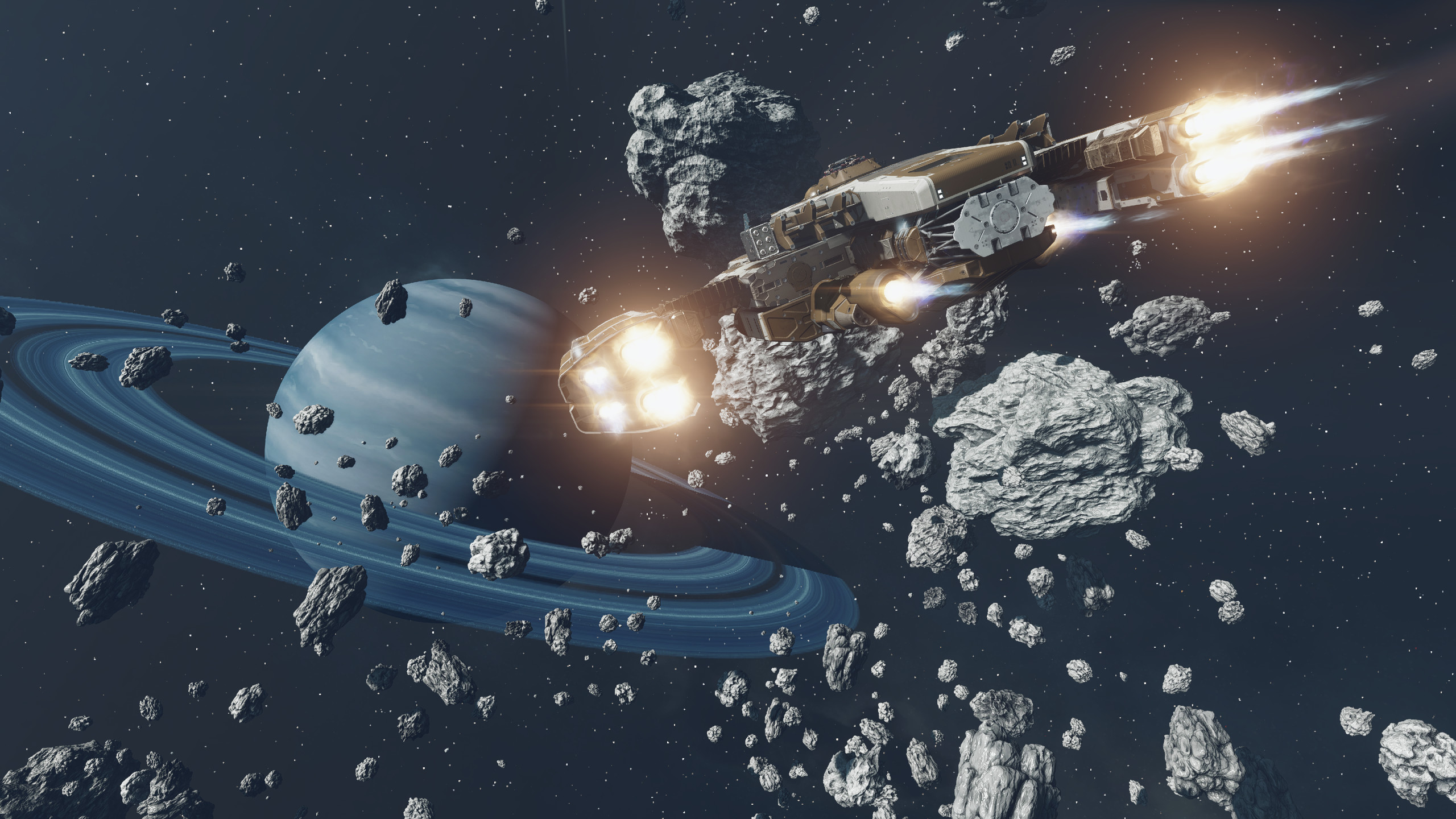
The very first thing I did after landing on Earth's moon in Starfield was run. Run, run, and keep on running just to see how far the game would let me go. Would Bethesda really let me take a lap around the moon, No Man's Sky-style?
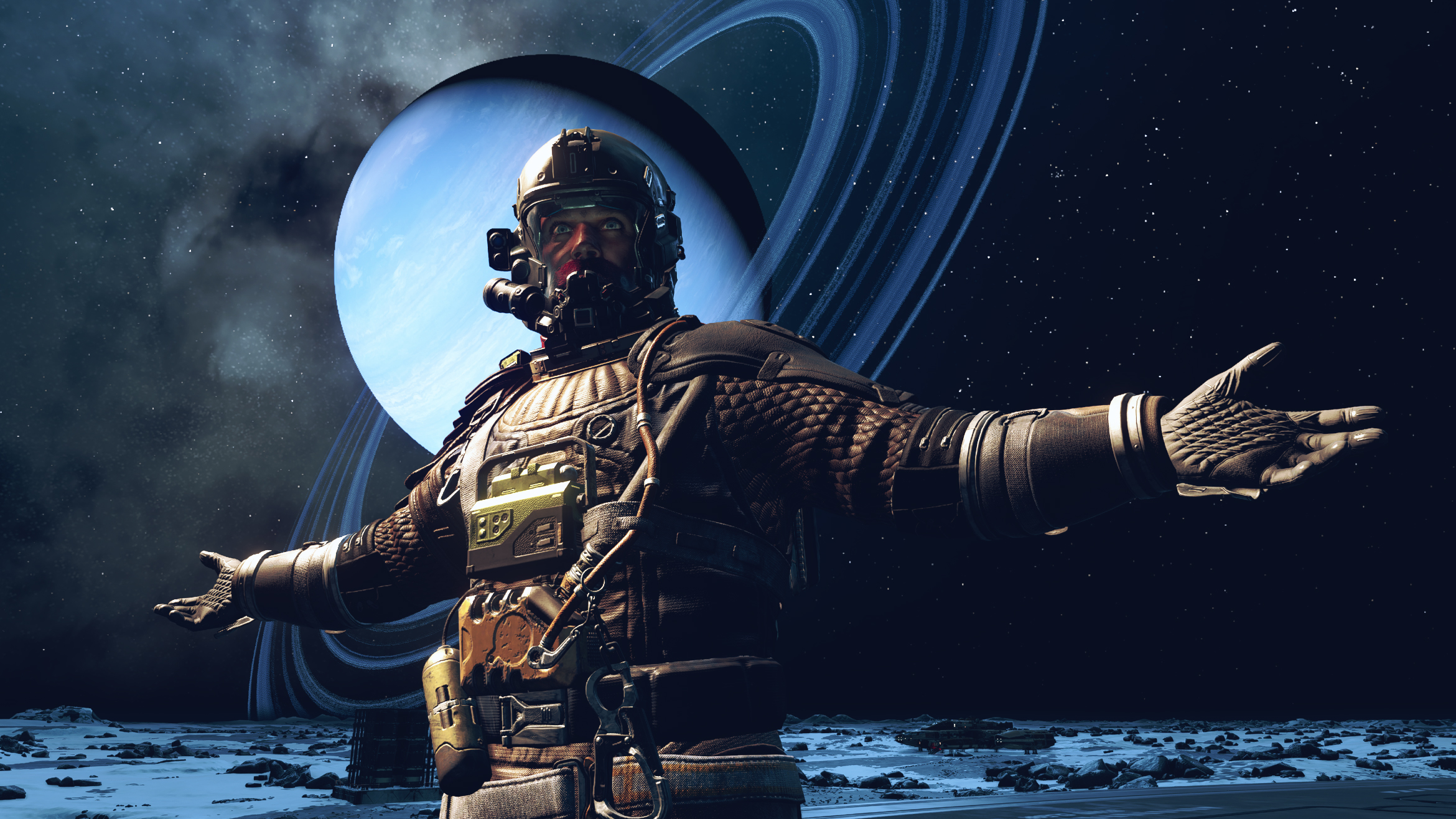
Starfield guide: Our hub of advice
Starfield console commands: Every cheat you need
Starfield mods: Space is your sandbox
Starfield traits: The full list, with our top picks
Starfield companions: All your recruitable crew
Starfield romance options: Space dating
I passed an abandoned factory with pirates in it, an outpost with unnamed randos in it, another abandoned facility with bad guys in it, and then nothing but lots and lots of rocks (which is pretty accurate for the moon, as I understand it). I kept sprinting for around six minutes until a message appeared on screen that you might recognize if you've been paying attention to Starfield leaks:
"Boundary Reached: Open the map to explore another region, or return to your ship."
It's true: you cannot continuously walk around planets in Starfield. You can select a landing spot virtually anywhere on a planet from out in space, but once you're there, Starfield renders a square-shaped chunk of planet that's roughly a kilometer or two wide.
I was pretty bummed when I hit that invisible wall—we've known all along that Starfield isn't a space sim and that some aspects of travel would be automated, like landing on planets, but the way Bethesda has talked about Starfield's hundreds of planets in interviews and presentations led me to believe they'd be a major part the game. They're really not. "Exploring" in Starfield really just means "running in a straight line from where your ship lands to the pre-populated facilities around you." Along the way, you can scan plants and critters, or mine rocks.
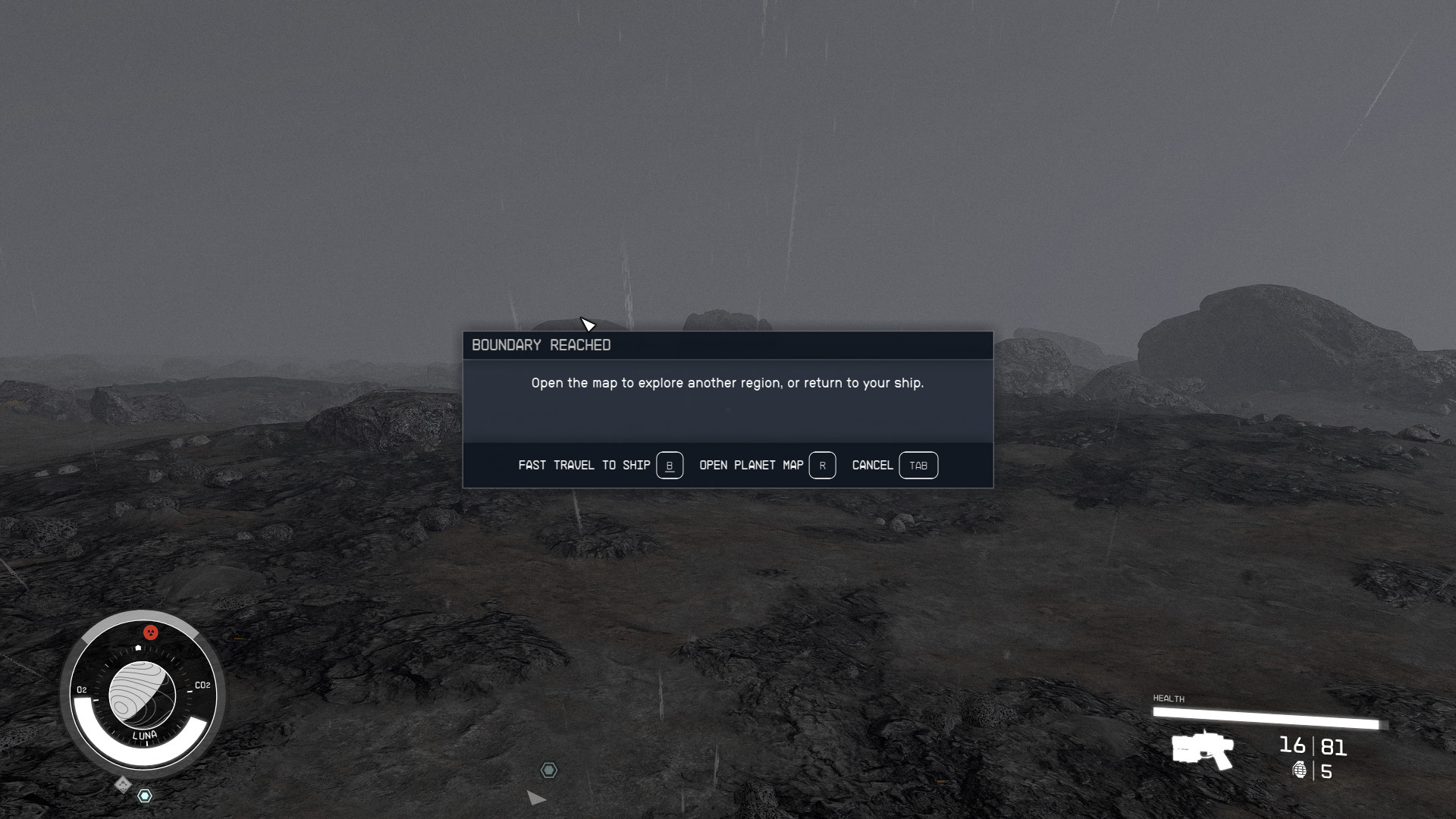
If you're coming into Starfield with some expectation that it behaves anything like the simulated worlds of Elite: Dangerous, No Man's Sky, or Star Citizen, here's a breakdown of what you can and definitely cannot do:
What you can do
The biggest gaming news, reviews and hardware deals
Keep up to date with the most important stories and the best deals, as picked by the PC Gamer team.
- Select a landing spot anywhere on a planet, and go there: oceans excluded
- Scan planets from orbit: See what raw materials a planet has before landing
- Explore the surface of planets in chunks: on-foot only
- Scan flora, fauna, and resources: Every planet as a checklist of scannable stuff that you can sell after completing
- Discover a planet's traits: Some planets have unusual attributes you can discover by exploring and scanning them
- Fly around in space near planets, moons, or star bases: Though there's no real reason to do this unless you're getting shot at by pirates
What you can't do
- Continuously walk the circumference of a planet: you'll hit a boundary eventually
- Fly your ship anywhere on a planet: Landing and taking off are purely cutscenes, and there's no way to fly to a different region without returning to orbit first
- Run out of oxygen: You have an oxygen meter, but it's not real. "Oxygen" is just Endurance from Skyrim and Fallout 4. A sprint meter, essentially.
- Fuel up for a long journey: Your ship has a meter that suggests you can run out of jump fuel if you travel between systems too much, but it's not real either. The meter determines how far you can go in a single jump, but you just make several jumps if your destination is too far away.
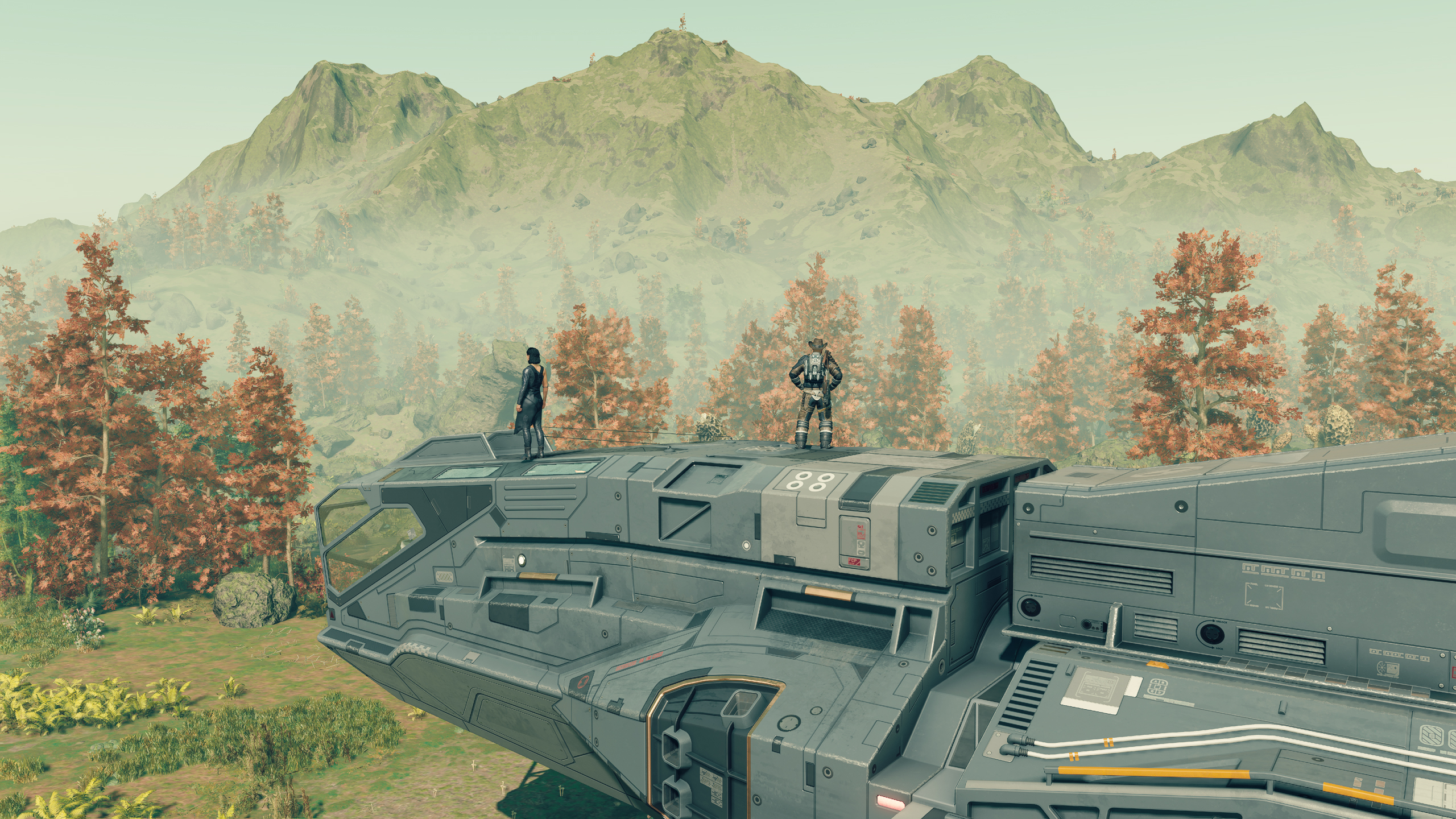
I cannot emphasize enough how much Starfield is not a survival game, no matter how often it borrows terms and systems associated with them. Which isn't to say that an actual oxygen limit would automatically make exploration more fun. Unless clearing out dozens of indistinguishable mining facilities, factories, and abandoned outposts is your idea of emergent discovery, I've yet to record anything worth talking about on Starfield's planets that wasn't associated with a quest.
Chris, who has played a lot more than me, said it best in our Starfield review:
"I never felt excitement or awe, no goosebumps as my engines fired, no sense of grandeur as I set down on a new world. That's because despite cruising from one end of the galaxy to the other in Starfield, I never felt like I was really going anywhere."
And that's pretty much been my takeaway trying to play Starfield as a space sim enjoyer: stick to the quests, because none of my deeper space adventuring fantasies will be realized by fast traveling between systems for hours.
What pulls me out of Starfield's star-hopping fantasy more than anything else is how my spaceship doesn't really feel like a spaceship—it's a teleporting house that I occasionally steer.
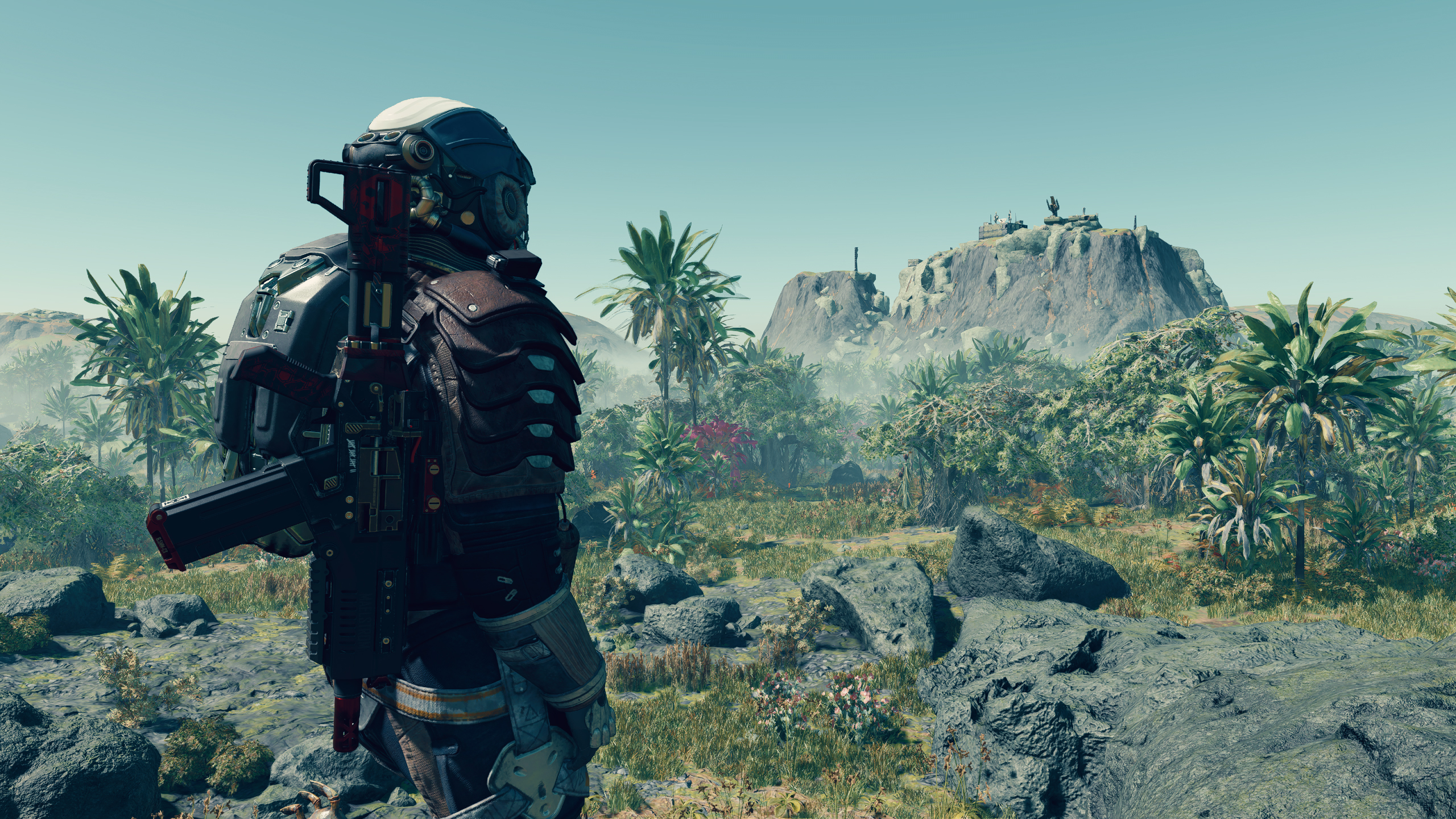
For as much as Bethesda has emphasized the freedom to go anywhere, you're actually tethered pretty tightly to your ship: there are no ground vehicles, and you can't even fly around a planet's atmosphere. This was a particularly painful discovery for me because I really enjoyed flying low to the ground in No Man's Sky, spotting something from the cockpit that caught my eye, and landing to investigate. Even within the bounds of Starfield's abbreviated ship travel, I never felt anything close to that level of freedom.
Fast travel is the only way to get around the galaxy in Starfield, and that alone has essentially erased one of the best parts of Bethesda's past RPGs. Here's Chris again:
"What's really missing in Starfield's planetary exploration is what happens in other Bethesda RPGs: You head out toward your destination and get completely distracted along the way: meeting an NPC, hearing a nearby dispute, stumbling onto a new quest, and never quite getting the place you intended to without finding in a half-dozen new things to add to your to-do list."
As Chris notes, you get some of this in Starfield's handful of cities. The confines of Akila's walled city and Neon's claustrophobic alleyways are, ironically, where I've felt the most freedom to wander with the reasonable expectation that I'll actually find something worth looking for. People have names there, stories, schedules!
So as you begin your Starfield journey, know what you're getting into. It's a conventional Bethesda RPG that has plenty going for it in that respect—Chris liked it, in the end—but its newest, biggest swings are largely misses. Stick to quests, enjoy roleplaying, and don't expect much of anything from planets.

Morgan has been writing for PC Gamer since 2018, first as a freelancer and currently as a staff writer. He has also appeared on Polygon, Kotaku, Fanbyte, and PCGamesN. Before freelancing, he spent most of high school and all of college writing at small gaming sites that didn't pay him. He's very happy to have a real job now. Morgan is a beat writer following the latest and greatest shooters and the communities that play them. He also writes general news, reviews, features, the occasional guide, and bad jokes in Slack. Twist his arm, and he'll even write about a boring strategy game. Please don't, though.

